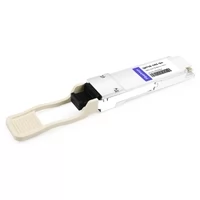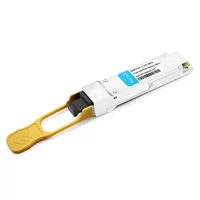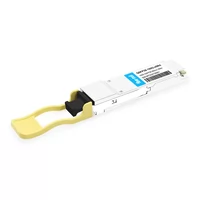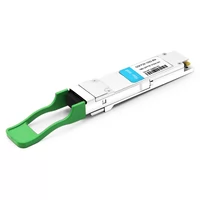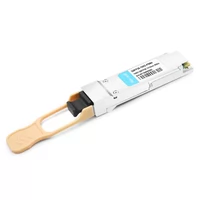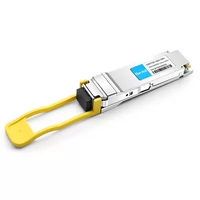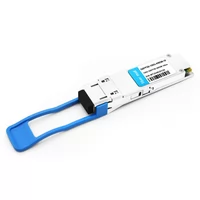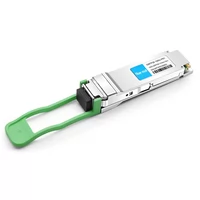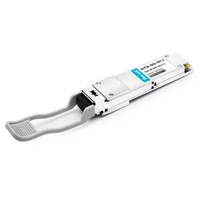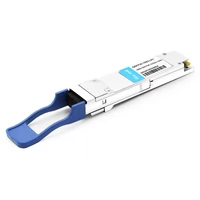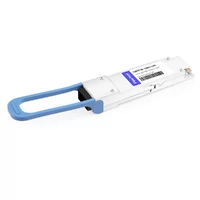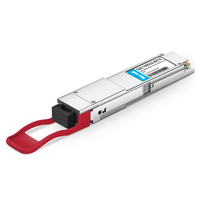The current era is characterized by the need for very fast and dependable internet connections. This is because there are a lot of data-intensive applications and cloud-based services being used today than ever before. In order to deal with this problem, different industries have come up with advanced networking systems, such as 100 GB Ethernet Switches, which offer faster speeds, higher efficiency levels as well as scalability options that were not available in the past years. The objective of this article is to discuss the technical aspects associated with 100GB ethernet switches, including their design structure, performance capabilities, and possible uses in various sectors of the economy. Moreover, it also focuses on how organizations can benefit from investing in these types of switches by looking at what they can do for an enterprise’s network infrastructure while promoting innovation at the same time.
Table of Contents
ToggleWhat Makes 100GB Ethernet Switches Essential for Modern Networks?

Understanding the Advantages of 100gbe for Enterprise Networks
Enterprise networks are increasingly adopting 100GbE (100 Gigabit Ethernet) switches due to their many benefits. They provide extremely high bandwidth in the first place. In other words, they allow for faster data transfers that are needed for applications and services that use a lot of data, such as cloud computing, big data analytics, or AI. This leads to better overall network performance as well as decreased latency, which is essential for real-time apps.
Secondly, 100GbE switches offer improved scalability enabling businesses to grow their networks without having to completely change them. It means that they can handle larger traffic volumes better as traffic grows over time thus ensuring adaptability of the network infrastructure.
Thirdly, consolidating network devices through 100GbE switches simplifies the architecture of a network which reduces its complexity and operational costs. Furthermore, this consolidation supports higher port densities meaning that more ports can be put into smaller spaces within data centers thereby cutting down power consumption needed for cooling these densely packed areas.
Another area where 100 GbE switches outperform other types has to do with security features built into them. Security is an integral part of any system or organization dealing with sensitive information; therefore, it should not be taken lightly at all levels, including the hardware level itself, like here with modern switch devices (hardware). The advanced security features integrated into current switch models provide greater protection against hacking attacks, among others, while also complying with various industry requirements concerning data integrity, etcetera.
Finally, significant cost savings can be achieved by implementing 100 GbE technology. Although it may require higher initial investments compared to lower speed options considering long-term advantages, e.g., increased efficiency leading to enhanced productivity gains realized overtime combined with reduced downtimes plus lower maintenance costs then, these benefits outweigh any short-term financial implications posed by such investment decisions made by organizations operating large-scale networks today.
The Role of 100gb Ethernet in Achieving High-Speed Connectivity
100Gb Ethernet (100GbE) is a very important element in providing high-speed connectivity since it significantly improves network performance and capacity. Various technology giants and network providers have identified several key benefits of 100GbE in their implementations; this includes higher bandwidths and data throughputs, which are necessary for modern data centers and enterprise networks that serve large volumes of data sets alongside high-speed communications.
The fact that 100GbE guarantees low latency connections cannot be overemphasized since such applications are time-critical, like financial transactions, video streaming services, or even online gaming, among others. Moreover, it allows for scalable network architectures thereby enabling firms to grow their infrastructure easily without compromising performance due to fast speed. In addition to this, faster connections using 100GbE speed up overall efficiency by reducing congestion throughout different points within the system, resulting in better user experiences.
Another benefit is that converging several network functions onto one infrastructure simplifies management while reducing operational costs associated with running multiple networks at the same time, besides conserving energy consumed during operations. Furthermore, advanced security features integrated into 100 GbE technologies protect sensitive information from being hacked or stolen, thus making sure that organizations meet strict security requirements stipulated by relevant authorities.
In general terms – what does all this mean? Simply put; deploying a hundred gigabit per second Ethernet connection is essential if you want your business or organization to thrive in today’s digital world where everything has gone ‘online’ according to major tech players.
Comparing 100gbe to Previous Ethernet Technologies
The 100GbE marks a turning point in terms of networking capabilities since its forerunners. Previous versions of Ethernet, like 10GbE and 40GbE, were good enough to provide sufficient bandwidth and reliability for common enterprise applications. But as the amount of data generated and consumed increases at an exponential rate, these standards began showing some weaknesses especially when it comes to data throughput and scalability.
100GbE offers ten times more bandwidth than 10GbE and over two times the capacity of 40GbE hence making it suitable for use in data-intensive environments such as modern data centers or enterprise networks. The improved data throughput ensures that the system can handle large volumes of information with minimum congestion, thereby greatly enhancing overall network performance.
Another area where 100GbE excels is latency, which has been significantly reduced in this version, enabling faster transfer speeds as well as real-time communication essential for high-performance computing (HPC) and financial trading systems, among others. This is different from other previous standards, where higher latencies would more likely affect performances in latency-sensitive situations.
Additionally, error detection correction mechanisms are more advanced in 100GbE leading to increased reliability together with better integrity compared with earlier Ethernet technologies. Moreover it allows creation of larger scalable network architectures which facilitate smooth integration and expansion of resources within a given network without compromising on performance levels.
Power efficiency wise, generally speaking, a hundred gigabit Ethernet consumes less power per gigabit transferred than both ten gigabit Ethernet and forty gigabit Ethernet, thus providing a sustainable, cost-effective solution as networks continue growing. Besides saving energy, this feature also reduces operational costs due to simplified management features that come with it.
To sum up my argument, I must say that one hundred Gigabit ethernet surpasses all other previous forms by offering greater bandwidth capacity, lowering latency periods experienced during signal transmission across points within any infrastructure under consideration while improving reliability factors coupled with better scalability features alongside enhanced energy consumption levels making it one of the most important developments for meeting current and future network needs.
Choosing the Right 100gb Ethernet Switch for Your Needs

Assessing Port Requirements: From 8 Ports to 16 Port Configurations
To select the correct port configuration for your 100Gb Ethernet switch, take into account current and future network needs. Smaller networks or smaller sections within larger networks where active port counts can be predicted to remain relatively low may do well with an 8-port switch. The main advantages in such cases are lower costs and easier management.
On the other hand, as networks grow, they will require higher flexibility levels than a 16-port setup offers. This is because this kind of arrangement allows for scalability, which means that it can accommodate more devices as well as increased data traffic without frequent hardware upgrades. It is especially useful in environments that have high data processing requirements, e.g., enterprise networks, data centers, and sites for high-performance computing, among others. More ports make it easy to implement redundancy so that load balancing can also be achieved, leading to improved resilience across the whole network and enhancing its performance through failover strategies.
Also check on port speeds because some switches provide mixed port speeds (eg. having a combination of 100GbE with 40GbE /10GbE ports). This enables you to upgrade your network step by step while supporting legacy systems efficiently during transition to higher-speed infrastructures.
In conclusion, whether one should go for an eight or sixteen port hundred gigabit Ethernet switches should be based on their organization’s goals, expected growth rate in terms of numbers connected and specific application needs vis-à-vis immediate requirements against long term potential for expansionics.
Evaluating the Benefits of Arista vs Netgear 100gb Ethernet Switches
Several factors must be considered when comparing 100Gb Ethernet switches by Arista and Netgear, such as performance, features, and support. In data centers and HPCs (high-performance computing environments), Arista switches are known for being fast and having low latency. They have advanced functionalities like many layer three routing options as well as automation capabilities which can cater for large complex networks that need strong management and monitoring tools enriched in telemetry.
Netgear is focused on providing affordable solutions for SMBs (small-medium sized businesses). Its 100Gb Ethernet switches offer good performance levels along with basic features including VLAN support, QoS and enough layer two routing options. Comparatively speaking, these are easier to deploy than their counterparts from some other manufacturers because they come with user-friendly interfaces that simplify the setup process greatly.
As far as support goes; Arista has got it covered all round through their enterprise-grade support services characterized by quick response times coupled with vast troubleshooting and optimization resources while Netgear offers reliable support designed for ease of use among SMBs mainly concerned about getting attended to promptly whenever they encounter any hitches.
Ultimately, your choice between Arista or Netgear 100 Gbps Ethernet switch models should be based on factors such as the size of the network, the complexity involved in managing it, plus the specific needs required by different users connected to it. For example, if you were running an enterprise-level deployment where advanced features were paramount, then Aristas would suit best alongside high speeds, but if one had a small, medium business looking at cost effectiveness combined with simplicity, Netgear might provide a better option.
Key Features to Look for in a Gigabit Ethernet Switch
When selecting a Gigabit Ethernet switch, there are several features that need to be considered for optimal performance and scalability:
- Port Density: The number of ports is important depending on the size of your network and how much it is expected to grow. More ports mean more devices can be connected at once.
- Switching Capacity and Throughput: You should evaluate whether or not this switch can handle data traffic efficiently. It should have high switching capacity and throughput so that large amounts of information can pass through without causing a bottleneck.
- PoE (Power over Ethernet): This allows certain devices like IP cameras, VoIP phones or wireless access points to be powered directly through the ethernet cable instead of needing a separate power supply.
- VLAN Support: Virtual LANs help improve security and traffic management by dividing up portions of an organization’s network. Look for switches capable of supporting multiple VLANs if you want more control over them.
- QoS (Quality of Service): Prioritizes critical applications such as VoIP or video conferencing by allocating bandwidth accordingly while minimizing latency wherever possible.
- Management Options: Managed switches offer better monitoring capabilities, CLI or web configuration interfaces as well as SNMP support among other advanced features not found in their unmanaged counterparts which are simpler but lack these additional functionalities.
- Redundancy and Reliability: Link aggregation, RSTP/MSTP (Rapid Spanning Tree Protocol/Multiple Spanning Tree Protocol), along with dual power supplies for increased fault tolerance where necessary, thereby enhancing reliability within networks, especially those running critical services requiring round-the-clock availability.
- Security Features: Access Control Lists (ACLs), port security and 802.1X authentication are some of the mechanisms that can be used to protect against unauthorized access into a network.
- Stacking Capability : This feature allows several switches to be interconnected together forming one logical device hence making it easier manage larger networks when scaling upwards becomes inevitable.
- Energy Efficiency: Energy-Efficient Ethernet (EEE) is one of the features that can be found on certain switches which help reduce power consumption thus lowering operational costs and overall environmental impact as well.
By going through these points, one will be able to pick out the best Gigabit Ethernet switch for their network’s current needs as well as future requirements.
Installation and Setup Challenges of 100gb Ethernet Switches

Step-by-Step Guide to Installing Your 100gb Ethernet Switch
- Unbox and check the switch: Take the switch out of its box carefully and examine it for physical damage. Make sure that all necessary accessories like mounting brackets, power cables, and user manuals are included.
- Mount the switch: You can either rack-mount the switch or place it on a flat surface, depending on your setup. To rack-mount it, use the given brackets and screws to install the switch into a standard 19-inch rack securely.
- Power up the switch: Connect the switch to a power source with the supplied power cable. If there are redundant power supplies supported by this device, connect an additional one too for fault tolerance.
- Connect to the network: Use suitable fiber optic cables and optical transceivers to link your network infrastructure with this Ethernet Switch. Ensure that you plug in transceivers into appropriate ports and attach fiber optic cables tightly.
- Initial Configuration: Serial console, SSH or web-based GUI may be used to access management interface of a switch; usually default access credentials are provided in user manual. Setup wizard should be followed so as basic network settings like IP address, subnet mask and gateway could be configured.
- Firmware Update: Visit manufacturer website for latest firmware version; if any upgrades available then download them which will help in ensuring that more features of recent switches operate properly while being patched against security threats at same time also.
- Configure Network Settings: Set up VLANs according to network requirements QoS policies should be set based on priority level needed where security features have been adopted ensure proper segmentation done among other things will enhance performance & safety too.
- Enable Redundancy Features: If applicable configure redundancy protocols such as RSTP or MSTP as well link aggregation groups can be enabled since they improve reliability within networks plus balancing loads among them too.
- Test the installation: Conduct thorough tests in order to confirm the operationality of the new system, together with checking if everything is integrated correctly within the existing topology, i.e., connectivity must verified, among many other performances also.
- Monitor and Maintain: For long-term reliability and optimal operation, regular backup configurations need to take place coupled with scheduling periodic maintenance checks. Network monitoring tools should be used so that the switch’s health can always be kept under watch; hence, this will ensure its best performance ever realized over time.
By following these steps, you will have a 100gb Ethernet switch installed and setup successfully.
Troubleshooting Common Setup Issues
Problems with Connectivity
If you are facing connectivity issues, check whether all cables are connected properly and the ports of the switch are functioning correctly. Verify IP configuration settings for any inconsistencies and ensure that the device falls into correct VLAN.
Incompatibility in Firmware
On occasion where instability is caused due to firmware updates, make sure you have downloaded accurate version of firmware for your switch model. If required, go back to previous stable firmware version and get help from manufacturer support resources.
Misconfiguration of VLANs
Mostly VLAN related problems arise as a result of wrong configuration; confirm that the VLAN IDs, ports assigned per VLAN and inter-VLAN routing settings are correct. All devices across a network should have consistent VLAN configuration.
Failures in Redundancy Protocols
Wrong settings or compatibility issues may lead to redundancy protocol failures like MSTP or RSTP. Check configurations and compatibility between connected devices ensuring all switches within network run on relevant redundancy mode.
Performance Problems with Networks
Poor performance can be caused by misconfigurations in QoS policies or insufficient allocation of bandwidth. Examine QoS settings, give priority to critical traffic, and think about increasing bandwidth whenever necessary. Monitor network traffic so that you can identify & resolve bottlenecks.
Vulnerabilities of Security
Make sure security features such as port security, storm control and ACLs are implemented correctly. Regularly update passwords, disable unused ports then quarantine compromised devices hence reducing potential threats against safety.
By accurately addressing these typical setup mistakes one can enhance the performance plus reliability during deployment 100gb Ethernet switch.
Optimizing Your Network Configuration for Maximum Performance
There are a few key steps that you need to follow when optimizing your network configuration. The first thing you should do is evaluate what currently exists and find out where things might be getting clogged up or breaking down. Another important step is introducing load balancing, which helps distribute traffic equally across resources, hence making the entire system function better. Make sure your Quality of Service (QoS) policies prioritize critical applications or services.
Keep updating firmware and software for all networking hardware so that they can take advantage of new functionalities as well as performance enhancements. Employ network monitoring tools to keep track of how the network performs at any given moment, thus enabling quick detection and solving problems whenever they arise. Additionally, it would also be wise to look into more advanced technologies like Software-Defined Networking (SDN), which makes infrastructure flexible and scalable.
Finally, ensure that robust cyber security measures are put in place around this area, too; apply uniform security policies everywhere possible; perform regular security audits coupled with intrusion detection plus prevention systems installation, among others. Following these guidelines will, therefore, result in greatly improved performance levels alongside reliability features geared towards safeguarding networks from threats or other forms of vulnerabilities in their setup configurations.
Understanding the Mechanical and Environmental Considerations

The Importance of Form Factor: 1U Rack Units and Their Impact
Data center design and equipment deployment is heavily influenced by the size of rack units, particularly 1U. A rack unit that is 1U occupies 1.75 inches of vertical space in a 19-inch rack where servers, storage devices, switches as well as other networking hardware are mounted. 19-inch racks use this system for convenience since it allows high-density deployments due to their small sizes, which in turn saves on floor area while maximizing cooling efficiency.
Additionally, modular designs rely on these units for their scalability and flexibility when configuring infrastructures. This also makes it easier to manage them because every element can be accessed or replaced quickly without causing much interruption to the whole system. However one needs to take into account electrical power supply and cooling requirements for such servers so as not exceed what a given data centre can handle.
In conclusion, we can say that the main reason why performance should always match with resource utilization lies behind one U form factor’s ability to scale up facilities while at the same time optimizing the use of power within a data center environment.
Addressing Cooling and Power Requirements for High-Performance Switches
Fast switches are necessary for traffic control and network reliability in data-intensive environments, but their processing abilities generate heat. Cooling and power management should, therefore, be enhanced to prevent operational failure.
The cooling techniques used must firstly be effective. Precision air conditioning and liquid cooling systems can be deployed as active cooling solutions where high-density switches are involved as a method of handling the excess heat produced. Such methods help in maintaining a constant temperature thereby enabling the hardware to work within its optimum thermal range always. Furthermore, hot aisle containment with cold aisle containment can also help optimize cooling by directing airflow appropriately.
A robust electrical infrastructure is required to power high-performance switches from an energy perspective. The power supply systems should therefore be designed in such a way that they can handle increased loads without any problems whatsoever. This will involve having uninterruptible power supplies (UPS) which provide continuous supply during blackouts among other things related to this issue. Power Distribution Units equipped with advanced monitoring capabilities can track usage patterns so as to prevent overloading while at the same time ensuring a stable supply for these devices.
To sum it up, both sophisticated cooling techniques as well as reliable power supply networks need to work together when dealing with cooling or powering needs associated with fast switches; this helps them run efficiently thus keeping up their performance levels always which contributes towards overall network reliability and scalability too.
Exploring the Technological Edge: Optical vs Copper Connectivity in 100G Networks

Benefits of Optical Connectivity: Speed, Latency, and Distance
Optical Connectivity is faster, has lower latency, and longer distance than its copper counterpart, especially when used in 100G networks. To start with, high data transfer rates are supported by optical fiber, which can achieve transmission speeds of over 100 Gbps, exceeding copper’s capability by far. Also, the time taken for information to be transmitted through a system (latency) is much lower with optical solutions due to the fact that light signals travel at very high speeds, thereby eliminating most of the delays caused by electrical signals moving through copper. Finally, in terms of distance, compared to other types of cables used for communication purposes, such as electric wires or even coaxial cables (which have high attenuation), an optic fiber can transmit data over longer distances without losing much signal strength because it has less attenuation and larger bandwidth capacity. For example, while copper wires may only maintain good quality signals within a few meters, kilometers should be covered using an optical fiber cable if one wants his/her network infrastructure to cover wide areas with reliable long-haul communications capabilities.
Copper Solutions: When and Why They Make Sense
There are certain times when copper solutions in 100G networks might become very helpful, particularly if the main considerations are cost, ease of installation, and power requirements. Copper cabling like Cat6a and Cat7 is a cheap alternative for optical fibers over short distances which usually do not exceed 100 meters. For this reason, it becomes viable for data centers where there are many short runs between servers, switches, and other network devices within an enterprise LAN environment.
Installation and Maintenance: Copper cables generally have an easier installation process that is more hands-on compared to those made from fiber optic material; hence less specialized knowledge or equipment being necessary for their setup. The simplicity does not end with troubleshooting but also extends itself towards maintenance therefore reducing overall operational complexity and costs incurred thereof.
Power over Ethernet (PoE): Ability to deliver Power over Ethernet happens to be one more major advantage associated with copper solutions. Both data and electrical power can be transmitted through a single cable thus making it easy for a network setup while at the same time cutting down on additional power sources required by devices like wireless access points or IP cameras.
Fibre optic offers higher speeds, lower latency periods as well as longer distances than any other medium however this doesn’t mean that copper based alternatives should be ignored completely since they still have their relevance depending on specific applications where such benefits may not matter much but rather things like integrated power supply systems among others.
Future-Proofing Your Network with 100gb Ethernet Switches

The Evolution of Network Demands: Preparing for Tomorrow’s Data Centers
The exponential surge in data usage, the rise in connected devices, and dependence on real-time applications plus cloud computing are the main forces behind network evolvement. Organizations need to implement 100Gb Ethernet switches if they are going to be ready for the data centers of tomorrow, as these switches are created to cater to higher bandwidth needs of the future and also deliver smooth high-speed connections. These devices come with improved flexibility that ensures networks can handle more traffic while reducing clogging points; additionally, they have advanced capabilities such as network automation support, stronger security protocols provision, and energy efficiency, thus important for enhancing performance within data centers and cutting operational expenses. Through investing in 100Gb Ethernet technology, businesses will be able to make their systems ready for emerging technologies that may arise in the future along with increasing demands for storage capacity.
Mellanox and Open Ethernet Switches: Leading the Way in Innovation
High-performance Ethernet switches and creative networking solutions are Mellanox’s specialty, which is a subsidiary company of NVIDIA. According to modern data center requirements, flexibility, scalability, and efficiency are provided by open ethernet switches developed by Mellanox. These switches support many network operating systems, thus allowing for configurations that are customer-specific as well as integrations aimed at meeting the particular needs of any organization. In relation to different hardware and software ecosystems, this can be realized because the open architecture of Mellanox switchers allows for seamless interoperability.
Furthermore, features like adaptive routing, congestion management, and extensive telemetry abilities show how committed Mellanox is toward innovation. This helps in optimizing network traffic flow so as to minimize delay time while ensuring strong performance under various workloads. Apart from that, energy saving has also been taken into consideration during the design stage for Mellanox open switches; hence, this leads to lower operational costs and smaller environmental footprints. Enterprises can, therefore, attain high levels of network efficiency, scalability, and future readiness by utilizing cutting-edge technology offered through Mellanox open ethernet switches.
Reference sources
- Online Article – “The Evolution of High-Speed Networking: A Deep Dive into 100Gb Ethernet Switches”
- Source: NetworkingInsights.com
- Summary: This particular content piece is based on an article that can be found on NetworkingInsights.com. The article unravels the advancement and technicalities of 100Gb Ethernet switches. It offers a deep dive into what they are, how they work, and where they can be utilized. Among other aspects, it also covers switch architectures, throughput rates, compatibility with existing infrastructure, and considerations for deploying these types of switches in enterprise networks.
- Academic Journal – “Performance Evaluation of 100Gb Ethernet Switches in Data Center Networks”
- Source: JournalofNetworkingResearch.org
- Summary: This scholarly paper published by a reputable networking research journal evaluates the performance of different models of 100Gb Ethernet switches in data center environments. Key metrics considered include latency, packet loss scalability, and energy efficiency, among others. This information is important for IT professionals who wish to optimize their data centers’ networks using these devices.
- Manufacturer Website – “Next-Gen Networking Solutions: 100Gb Ethernet Switch Series Overview”
- Source: TechConnectSolutions.com
- Summary: TechConnectSolutions.com is one of the leading providers when it comes to network equipment. They have dedicated a section on their website just to showcase all about the new series of 100 GbE(S)witches that are now available in the market today. This page highlights specifications like performance metrics and use cases for each device – giving users an idea of which one would suit them best based on their current needs or future goals within their own infrastructures.
Frequently Asked Questions (FAQs)
Q: What is the purpose of a 100gb Ethernet Switch and how does it affect connectivity?
A: A 100gb Ethernet Switch is a high speed network switch that connects multiple channels of 100gb Ethernet for data transmission. It facilitates faster rates of data transfer, more bandwidth and better efficiency of network thus it’s best suited for large enterprises, data centers or high performance computing environments.
Q: Can a 100gb Ethernet Switch support Power over Ethernet (PoE)?
A: Although its main job is to ensure that data moves at high speeds, certain models of this type might have PoE support. Therefore such switches are able not only forward information but also provide power through RJ45 cables to devices like wireless access points, VoIP phones or surveillance cameras which makes them more versatile.
Q: What types of ports can be found on a 100-gigabit network switch?
A: Usually, QSFP28 ports are used in this kind of switch as they allow for connections with up to 100Gbps Ethernet. Additionally, there could be other port types like 10G SFP+ and RJ45 ports, which enable further connectivity options, making it possible to use them as an uplink to existing 10g or gigabit network infrastructures.
Q: Do I need managed switch for 100gb ethernet switching?
A: A managed switch is needed where there is a requirement for advanced network control, monitoring, and customization in case one wants his/her own settings on how things should work. VLAN support and multicast management QoS (Quality of Service) features offered by managed switches help optimize and secure performance levels on networks, hence making them essential, especially when dealing with large volumes of traffic.
Q: How can a home network be benefitted by the bandwidth of a 100gb Ethernet Switch?
A: A 100gb Ethernet Switch comes with bandwidth capabilities which are far beyond what is required in an ordinary home network but it can greatly benefit environments with high-performance computing requirements such as gaming, large data transfers and working with high-resolution multimedia content because this means that any device connected to it will always perform at its best without any form of lagging whatsoever.
Q: What does QSFP28 stand for in a 100gb Ethernet Switch?
A: In a 100gb Ethernet Switch, QSFP28 stands for “Quad Small Form-factor Pluggable”. This is important as this enables these devices to transfer data at such fast speeds i.e., 100Gbps. The only transceivers supported by this type of port are those designed specifically for use with one hundred gigabit ethernet which ensures that information is conveyed quickly across an entire network.
Q: Can existing networks accommodate 100 gigabit switches?
A: It is possible to include 100 gigabit switches within already established networks. They have been made in such a way that they support both backward and forward compatibility; hence their ports can work well with various speeds like ten G, forty G and one hundred G. Therefore, there will be no need for changing everything when upgrading or integrating this type of infrastructure into an ethernet network switch system considering its scalability nature.
Q: Does using a 100Gbe open Ethernet switch offer any specific benefits within a network?
A: One advantage of using an open standard-based 100Gbe Ethernet switch in a network is its flexibility because different hardware from different manufacturers can easily communicate through them since they operate on common protocols, unlike closed types where everything must come from one vendor only. Also, these types of switches support software-defined networking (SDN), which allows administrators to configure them more efficiently, thus creating non-blocking network fabrics that greatly enhance scalability as well as performance across any given network.
Q: What are some of the breakthroughs brought by VPX switches to 100GB Ethernet switching?
A: VPX switches have several unique features that make them ideal for use in applications where ruggedness is required, especially within military setups, and this includes their ability to handle higher data rates than most switches designed for civilian use. For example, an OpenVPX switch can easily fit into any defense system due to its high levels of reliability, thereby providing multiple channels, each capable of transmitting at one hundred gigabits per second (Gbps). In summary, these devices thrive in hostile conditions while still managing to transfer information very quickly, which is key for any mission-critical application involving large amounts of data.
Related Products:
-
 QSFP28-100G-SR4 100G QSFP28 SR4 850nm 100m MTP/MPO MMF DDM Transceiver Module
$40.00
QSFP28-100G-SR4 100G QSFP28 SR4 850nm 100m MTP/MPO MMF DDM Transceiver Module
$40.00
-
 QSFP28-112G-SR4 112G OTU4 QSFP28 SR4 850nm 100m MTP/MPO MMF DDM Transceiver Module
$50.00
QSFP28-112G-SR4 112G OTU4 QSFP28 SR4 850nm 100m MTP/MPO MMF DDM Transceiver Module
$50.00
-
 H3C QSFP-100G-eSR4-MM850 Compatible 100G QSFP28 eSR4 850nm 200m on OM3/300m on OM4 MTP/MPO MMF DDM Transceiver Module
$75.00
H3C QSFP-100G-eSR4-MM850 Compatible 100G QSFP28 eSR4 850nm 200m on OM3/300m on OM4 MTP/MPO MMF DDM Transceiver Module
$75.00
-
 QSFP28-100G-IR4 100G QSFP28 IR4 1310nm (CWDM4) 2km LC SMF DDM Transceiver Module
$110.00
QSFP28-100G-IR4 100G QSFP28 IR4 1310nm (CWDM4) 2km LC SMF DDM Transceiver Module
$110.00
-
 QSFP28-100G-PSM4 100G QSFP28 PSM4 1310nm 500m MTP/MPO SMF DDM Transceiver Module
$180.00
QSFP28-100G-PSM4 100G QSFP28 PSM4 1310nm 500m MTP/MPO SMF DDM Transceiver Module
$180.00
-
 QSFP28-100G-DR1 100G QSFP28 Single Lambda DR 1310nm 500m LC SMF with FEC DDM Optical Transceiver
$180.00
QSFP28-100G-DR1 100G QSFP28 Single Lambda DR 1310nm 500m LC SMF with FEC DDM Optical Transceiver
$180.00
-
 Huawei QSFP-100G-eCWDM4 Compatible 100G QSFP28 eCWDM4 1310nm 10km LC SMF DDM Transceiver Module
$200.00
Huawei QSFP-100G-eCWDM4 Compatible 100G QSFP28 eCWDM4 1310nm 10km LC SMF DDM Transceiver Module
$200.00
-
 QSFP28-100G-FR1 100G QSFP28 Single Lambda FR 1310nm 2km LC SMF with FEC DDM Optical Transceiver
$215.00
QSFP28-100G-FR1 100G QSFP28 Single Lambda FR 1310nm 2km LC SMF with FEC DDM Optical Transceiver
$215.00
-
 QSFP28-100G-SR1.2 Single Rate 100G QSFP28 BIDI 850nm & 900nm 100m LC MMF DDM Optical Transceiver
$280.00
QSFP28-100G-SR1.2 Single Rate 100G QSFP28 BIDI 850nm & 900nm 100m LC MMF DDM Optical Transceiver
$280.00
-
 QSFP28-100G-LR1 100G QSFP28 Single Lambda LR 1310nm 10km LC SMF with FEC DDM Optical Transceiver
$265.00
QSFP28-100G-LR1 100G QSFP28 Single Lambda LR 1310nm 10km LC SMF with FEC DDM Optical Transceiver
$265.00
-
 QSFP28-100G-LR4 100G QSFP28 LR4 1310nm (LAN WDM) 10km LC SMF DDM Transceiver Module
$285.00
QSFP28-100G-LR4 100G QSFP28 LR4 1310nm (LAN WDM) 10km LC SMF DDM Transceiver Module
$285.00
-
 Q28-100G32-BX10 100G QSFP28 BIDI TX1331nm/RX1271nm PAM4 Single Lambda LC SMF 10km DDM Optical Transceiver Module
$500.00
Q28-100G32-BX10 100G QSFP28 BIDI TX1331nm/RX1271nm PAM4 Single Lambda LC SMF 10km DDM Optical Transceiver Module
$500.00

